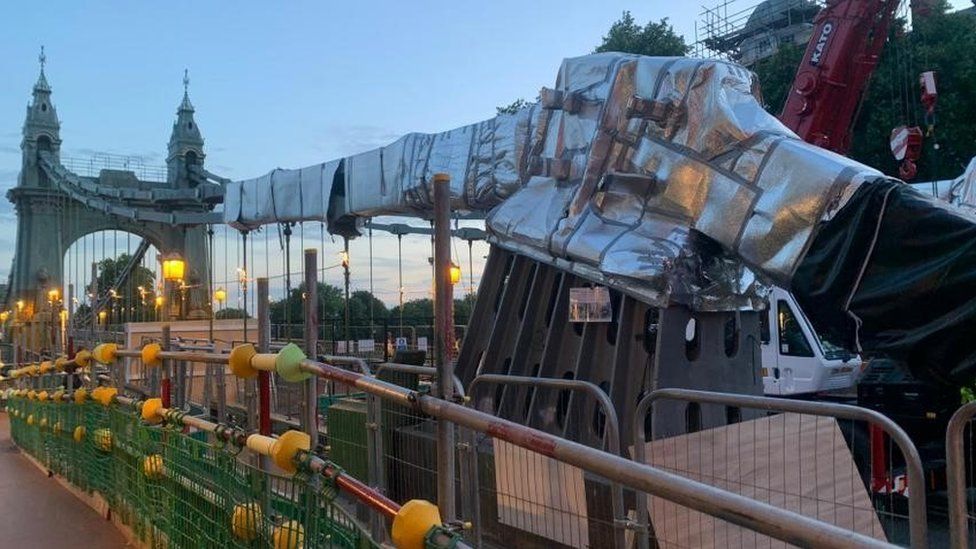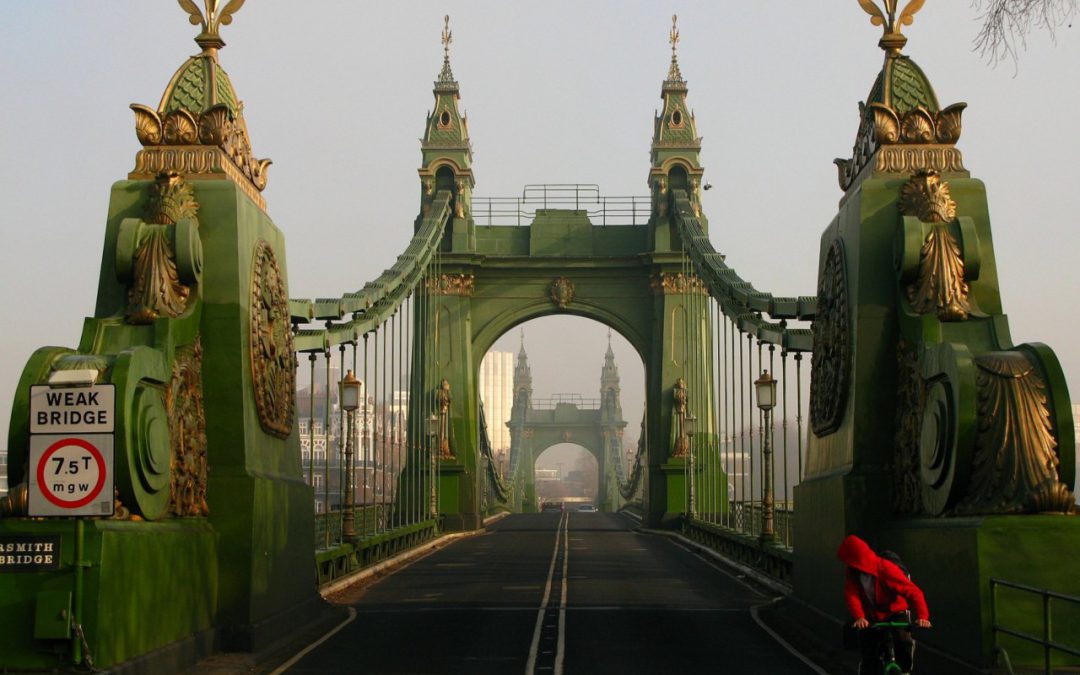Critical work to stabilise the Hammersmith Bridge has been completed this week, with engineers strengthening all four pedestals using “bespoke” concrete The stabilisation programme was planned, trialled and designed off-site, using a replica pedestal The bridge has been permanently closed to all traffic since cracks widened in its cast iron pedestals in August 2020, sparking concerns that it could suffer a “catastrophic failure”. It is the culmination of years of neglect and underfunding The bridge has been reopened to pedestrians and cyclists and FM Conway has been carrying out stabilisation work to the structure. Stabilisation works on the bridge are now due to be finished by the end of February 2023, following a delay acquiring steel from Ukraine due to the war.

This Week, The Pedestals Containing Micro-Fractures Were Reinforced With the Unique concrete Mix.
The four cast iron pedestals, one on each corner of the bridge, bear the weight of the structure. The Grade II listed pedestals’ exterior aesthetic has been maintained by pouring concrete inside their hollow centres – rather than altering their appearance. This was a difficult task, because concrete normally reaches a high temperature when it sets. However, the cast iron pedestals are vulnerable to the stresses that heat causes so engineers used a special low carbon material to keep the concrete’s curing heat lowIt was also necessary for the concrete to flow strongly enough to get into the pedestals’ 19th-century nooks and crannies while maintaining its strength. So “super-plasticisers” ensured it flowed well, and small steel fibres made the concrete stronger. In addition, concrete normally has to be shaken or poked in order to “compact” and set into the desired shape. Due to the fragility of the fractured pedestals, this was not an option, so engineers used innovative “self-compacting” concrete which sets with its own weight. The concrete mix was tested on-site to ensure the correct fibre content and flowability before.

40t Was Successfully Poured into The Pedestals to Stabilise Them For Further Works.
The next step for the pedestals is to inject grout into the top of each and attach temporary steel plates. This will provide extra support for the pedestals After this, steel reinforcements will be mounted to the points, or saddles, where the bridge’s chains are attached. The steel shipment was delayed by the Ukraine war. It has now arrived at the fabrication factory in North East England, where it is being cut welded and machined into shape Finally, the team will jack the saddles up and replace the corroded seized bearings. It comes after it was revealed that Hammersmith & Fulham Council is pushing ahead with plans for a temporary double-decker structure to aid repairs of the bridge The proposal drawn up by Foster Partners and Cowi first emerged in late 2020 after the council was forced to close the bridge due to fears it could collapse. Following a full feasibility study, NCE understands that the council has selected the double-decker solution as its preferred option and will now put it forward for planners to rule on.


Recent Comments